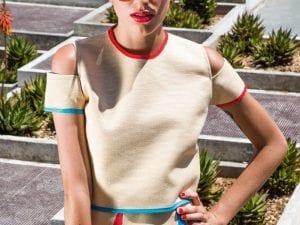For the third edition of the Chicago Architecture Biennial, international participants are collaborating with local communities to produce new work as part of a discursive look at how the built environment can encourage exchanges or increase socioeconomic inequalities. There is a special focus on the interdisciplinary nature of architecture, which is especially appropriate as it coincides with the EXPO Chicago fair that launches the fall art season each year. Chicago sits at the crossroads of the Great Plains and the Great Lakes, and as such the flows of people, goods and capital have defined its urban development. These concerns are very much at the forefront of the biennial, which advocates for a more inclusive, equitable and shared future in the field.
Spread across more than 40 sites and organisations throughout the city, it’s the largest exhibition of contemporary architecture, art and design in North America. The central venue, the Chicago Cultural Center, showcases projects by more than 80 participants from over 20 countries. Contributions range from Wolff Architects’ efforts to address social inequities and the erasure of indigenous heritage in places like their native South Africa; a repository of threatened heirloom seeds harvested by traditional Palestinian farmers; Ola Hassanain’s focus on policies affecting women in public places in Khartoum, and Doh Ho Suh’s ethereal sheer fabric structures replicating building and objects down to their most minute, intricate details.
Danish artists Gamborg / Magnussen’s field of 10,000 cabbages and fully functional outdoor garden kitchen serve as a gathering spot for locals in the Garfield Park neighbourhood. Meanwhile, Theaster Gates examines the politics of urban planning in his social practice installations centred around varying notions of black space and the potential of the “life within things.” At the pier, Ilya and Emilia Kabakov’s Ship of Tolerance makes an appearance, its sails composed of stitched paintings selected from those created by hundreds of local schoolchildren from different ethnic and social backgrounds after workshops on tolerance. The project ends with the wooden boat’s launch into the sunlight. Various editions of the installation have taken place across the world since 2005, from Egypt to Venice and Moscow.
On the sidelines of the Biennial and a drive out of the city, a light-based art intervention by Luftwerk (Petra Bachmaier and Sean Gallero), in collaboration with Iker Gil, projects a grid of neon laser beams and patterns across Farnsworth House, designed by Mies van der Rohe in the mid-20th century. The piece, premiered at the Miesdesigned Barcelona Pavilion in February, includes the sitespecific minimalist soundtrack created by Oriol Tarragó that reflects on the house’s underlying geometries which echo its topography in a river floodplain.
Olivia Hampton
The Biennial runs 19 September – 5 January. Find out more here.
Lead image: Concrete Tent in Abu Dhabi by DAAR, 2017. Photo by John Verghese.




